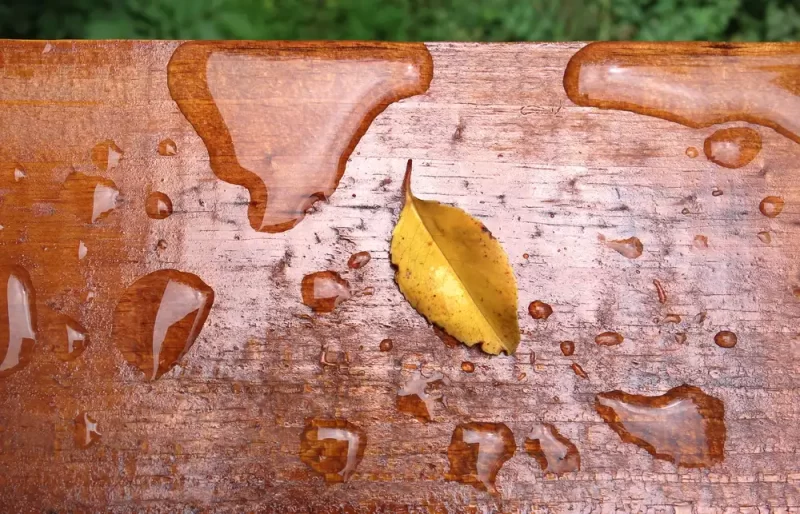Your deck is one of the best places to enjoy the outdoors—whether it’s morning coffee, weekend barbecues, or evening sunsets by the coast. But without proper maintenance, your deck can quickly become a victim of two common enemies: mold and rot. These problems don’t just affect your deck’s appearance—they can weaken the structure, shorten its lifespan, and lead to costly repairs. At Bayfront Exteriors, we specialize in helping homeowners protect their outdoor spaces from moisture damage, especially in humid, coastal environments. Here’s how you can prevent mold and rot to keep your deck strong, beautiful, and long-lasting.

Understand Why Mold and Rot Develop
Mold and rot thrive in damp, shaded areas where moisture lingers. Mold is a type of fungus that grows on the surface of wood, especially where there’s little sunlight or poor air circulation. Rot, on the other hand, is caused by fungi that feed on the wood itself, breaking down its fibers and weakening the structure over time. The main culprit behind both problems is moisture—whether from rain, humidity, or even sprinkler overspray. On the Texas coast, the combination of salt air, humidity, and sudden storms makes decks particularly vulnerable. Knowing what causes these issues is the first step in preventing them.
Choose the Right Materials from the Start
If you’re building a new deck or replacing an old one, material selection makes a huge difference. Natural wood decks, such as cedar or redwood, are more resistant to moisture and decay than softer woods. Pressure-treated lumber is another popular choice because it’s infused with preservatives that help resist rot and insect damage. However, even treated wood requires regular maintenance. For homeowners seeking a low-maintenance option, composite decking is a great alternative. Made from a blend of wood fibers and plastic, composite boards resist mold and rot far better than traditional wood. At Bayfront Exteriors, we often recommend materials based on your home’s location, exposure to sunlight, and lifestyle needs—because the right foundation helps prevent long-term problems.
Keep It Clean and Dry
Regular cleaning is one of the most effective ways to prevent mold and rot. Dirt, pollen, and organic debris can trap moisture, creating the perfect breeding ground for fungi. Sweep your deck often, especially after windy or rainy weather. Wash it thoroughly at least twice a year—spring and fall are ideal times. Use a mild deck cleaner or a solution of warm water and dish soap. For tough mold stains, a mixture of white vinegar and water works well without damaging the wood. Avoid using chlorine bleach, as it can strip the wood’s natural oils and cause discoloration. After cleaning, make sure the deck dries completely before applying any sealant or finish. Keeping your deck clean and dry is the simplest and most powerful way to stop mold and rot from taking hold.
Apply a High-Quality Sealant or Stain
A protective finish is your deck’s first line of defense against moisture. A high-quality sealant or water-repellent stain helps prevent water from seeping into the wood while still allowing it to breathe. For maximum protection, choose a product with UV inhibitors to reduce sun damage, which can dry and crack the wood, making it more susceptible to moisture infiltration. Apply a fresh coat every one to three years, depending on your climate and the product’s durability. Be sure to clean the surface thoroughly before sealing so that no dirt or mold gets trapped underneath. A professional application from a team like Bayfront Exteriors ensures even coverage and long-lasting protection.

Improve Drainage and Airflow
Standing water is the biggest enemy of any deck. Poor drainage and inadequate airflow create damp conditions that encourage mold and rot. Check that the spaces between deck boards are clear and wide enough to let water drain easily. If you notice water pooling in certain areas, adjust the slope or add drainage channels to direct it away. Also, make sure there’s enough space underneath the deck for air to circulate. Good ventilation allows the wood to dry quickly after rain, which is especially important in humid coastal regions. Trimming nearby bushes and removing items that block airflow—like large planters or storage boxes—also helps keep your deck dry and mold-free.
Control Shade and Vegetation
While some shade can make your deck more comfortable, too much shade creates a damp, mold-friendly environment. Overhanging trees, vines, and nearby shrubs can trap moisture and drop organic debris onto your deck. Fall is a great time to trim back summer growth and allow more sunlight and airflow to reach the wood. This not only reduces mold risk but also keeps your deck cleaner year-round. If you enjoy the greenery, consider using potted plants instead of climbing vines, and keep them on stands or trays to prevent water buildup underneath.
Inspect Regularly for Early Warning Signs
Catching problems early can save you from expensive repairs later. Every few months, take a close look at your deck for signs of mold, soft spots, discoloration, or musty odors. Check areas where the deck meets the house, as well as corners and spots near gutters or downspouts. If you find mold, clean it promptly with a safe cleaning solution. If you notice soft or spongy wood, that could indicate rot, and it’s best to have a professional assess the damage. Regular inspections help you address small issues before they spread and compromise the structure.
Maintain Gutters and Downspouts
One of the most overlooked aspects of deck maintenance is proper water management from your home’s roof. Gutters and downspouts that overflow or leak can send water directly onto your deck, creating chronic damp spots that lead to mold and rot. Make sure gutters are clean and positioned to drain water away from the deck area. If needed, install gutter extensions or splash guards to divert runoff safely. It’s a simple fix that can dramatically extend the life of your deck.
Refinish or Replace Damaged Boards
If you notice that certain boards are constantly damp, cracked, or discolored, it might be time for replacement. Replacing a few damaged boards now is far less expensive than repairing extensive rot later. When refinishing your deck, sand down rough areas and remove any peeling stain or paint before applying a fresh coat of sealant. Keeping the surface smooth and sealed prevents water from seeping into the grain. At Bayfront Exteriors, we specialize in restoring weathered decks to their original strength and beauty, ensuring your outdoor space stays safe and attractive for years to come.
Contact Us Today If You Need Help
Preventing mold and rot on your deck comes down to one main principle: keep it clean, dry, and protected. Regular maintenance, proper materials, and good design all work together to extend your deck’s life and preserve your investment. In coastal environments like ours, where humidity and salt air are constant challenges, a little proactive care goes a long way. Whether you need help with cleaning, sealing, repairing, or rebuilding your deck, Bayfront Exteriors has the experience and expertise to keep it looking great and standing strong season after season.

